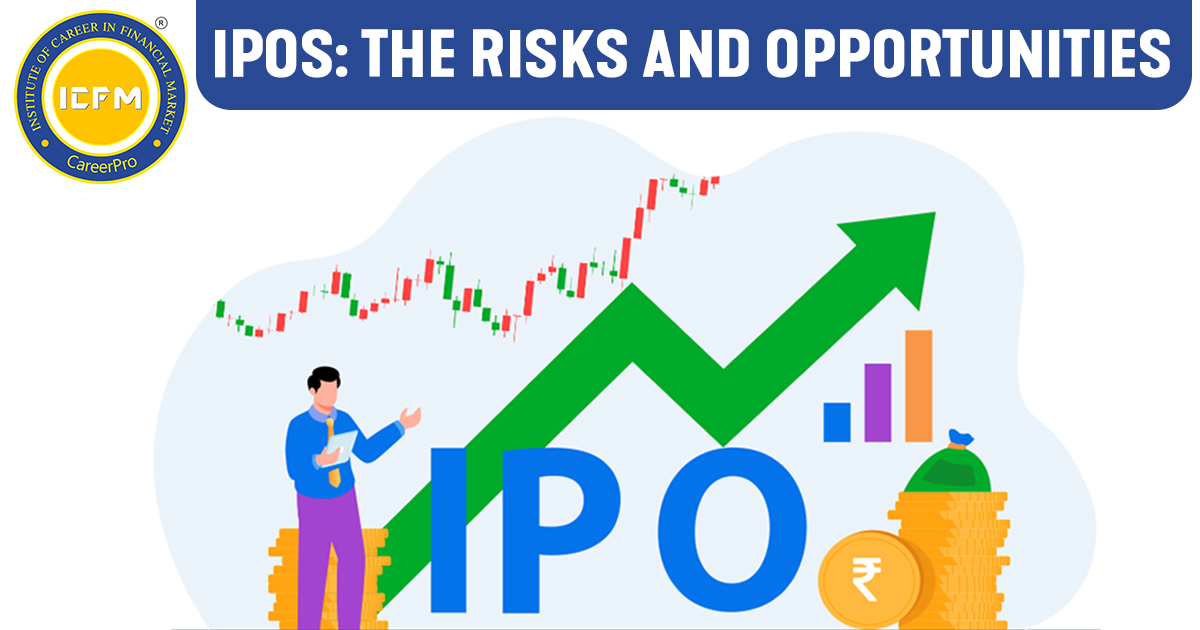One of the most interesting yet risky investments that an investor can make is in an initial public offering (IPO). IPOs do offer a phenomenal opportunity to buy the shares of a company when it goes public for the first time. However, they are also connected with unique challenges and uncertainties. Therefore, understanding the various risks and opportunities of IPO investing is important for any investor who wants to take informed decisions and make lucrative returns.
What Is an IPO?
An Initial Public Offering, or IPO, is when a privately held company issues shares to the general public for the first time. The process allows the firm to raise capital from public investors and changes from being a privately held firm to a public listed one. The IPO price is determined through an excruciatingly complex process involving the company, underwriters, and market demand.
Why Companies Go Public
• Capital Raising: It aids companies in raising large sums of capital for the expansion process, repaying debt, or setting up new projects.
• Liquidity: Through an IPO, early investors and founders get the facility of liquidity by selling their shares.
• Brand Visibility: Helps the company have better visibility and credibility in the market.
• Employees' Benefit: It helps in giving stock options and equity-based incentives to employees.
IPO Investing Opportunities
1. Early access to High Growth Companies
An IPO provides a way to invest in a possibly very high-growth company at an early stage of its public life. A number of successful companies have experienced big or even explosive share price appreciation over some period following an IPO. This has made getting in at the beginning extremely lucrative.
Case Study: Google IPO
Its IPO price in 2004 used to be US$85 per share. It has risen a few fold since then into what is now Alphabet Inc. It provided gigantic returns to those investors who showed faith in the early days of Google. Alphabet stock exchanges for more than US1,500 per share in 2024, underlying its tremendous growth and market dominance.
2. High-Return Potential
IPO investments can bring considerable returns, more so if the company does well and grows radically immediately after the IPO. Very often, early investors benefit from appreciation in stock value once the company has grown and become profitable.
Case Study: Beyond Meat IPO
Beyond Meat IPO'd in 2019 at an IPO price of $25 per share. In just months, the stock price surged over $200 per share, generating outsize returns for the initial investors in the company. The stock was pulled higher by the firm's strong performance in plant-based meat, indicating the possible outsized return characteristics from the IPO marketplace.
3. Diversification Benefits
Involvement in an IPO investing course will diversify your portfolio by the addition of new innovative companies. This process diversifies your investment portfolio, thereby offering coverage against sectors and emerging industries and balancing the risk-return profile of your portfolio.
Risks in IPO Investing
1. High Volatility
Most IPO stocks are very volatile, resulting in tenuous price swings within the first days and months of trading. Market sentiment, investor expectations, and general economic factors could hit the stock's price and then translate into losses.
Case Study: Uber IPO
Uber's IPO was tough in 2019, when the stock opened at $45 per share. A few weeks later, it slipped below its initial public offering price as investors had growing apprehensions over profitability and increasing competition in the ride-sharing market. This volatility lined the risks associated with investing in recently public firms.
2. Inadequate Historical Data
In contrast to the normal established companies, IPOs have no history of any kind that can be used as a track record on their financial performance and market behavior. Thus, an accurate assessment of the potential of the company becomes really challenging. This increases the potential for incomplete or optimistic projection-based investing.
Case Study: WeWork IPO Withdrawal
WeWork's initial public offering in 2019 never saw the light of day because of worries over the financial health and governance practices of the company. Lack of historical performance data, coupled with a lack of transparency in the business model, alarmed investors, thereby sending the IPO in withdrawal, with hugely discounted valuation for the firm.
3. Lock-Up Period Restraints
The investors in an IPO may be under lock-up period restrictions whereby they cannot sell their shares for a stipulated time — generally, 90-180 days — after the IPO. In such a scenario, the price of the stock may slide during the lock-up period, and the investors will not be able to sell their stock. This could cause loss.
4. Overvaluation Risk
IPOs can get overhyped, meaning that valuation comes because of the frenzy in the market rather than its intrinsic value. The stock declines when it turns out that it is not what the investors were expecting the company to be, causing losses to the investors purchasing at inflated prices.
Case Study: Snapchat IPO
Snapchat (Snap Inc.) went public in 2017 at an IPO price of $17 a share. The market's euphoria at that period pushed the stock first to almost $24 on the first trading day but later saw volatility and steep decline following the company's failure to live up to growth expectations, not to mention stiff competition from other social media platforms.
Strategies to Invest in IPO
1. Research and Due Diligence
Before investing in any IPO, research the company, its business model, its financials, and its market potential. Go through the prospectus; evaluate the trends of the industry involved; understand where the company sporadically stands with respect to competition. This due diligence will definitely help in making a more informed decision and avoid investing in overhyped or risky IPOs.
2. Assess Underwriting Quality
Note the reputation and track record of underwriters who manage the IPO. It would be expected that high-quality underwriters would bring strong firms into the market, thereby bringing an added layer of credibility and due diligence into the process.
3. Lock-Up Period
Be aware of the existence and effects of lock-up periods as part of the investment strategy. Assume that this limitation can hinder you from responding to changes in the market or managing your portfolio.
4. Start small
Given the high volatility and uncertainty, having a small allocation of your investment portfolio in an IPO might not be bad. This way, you will have a chance at upside potential while keeping your risk at bay.
5. Eye on the Market Conditions
This is about the overall market condition and sentiments. Most often, broader market trends influence the performance of an IPO and vice versa. Thus, investing at times that are favorable to the market can improve your chances of earning positive returns.
Conclusion
Initial public offers are a highly exciting investment opportunity; at the same time, they also carry significant risks with them. While the IPO does give an investor access to firms having high growth with spectacular returns, challenges include high volatility, an absence of history, and overvaluation that is quite probable. Deep research into the issuing companies' stocks, underwriting quality assessment, and cautiousness in investment will leverage ease for the investors to deal with all the complexities therein in IPO investing.









